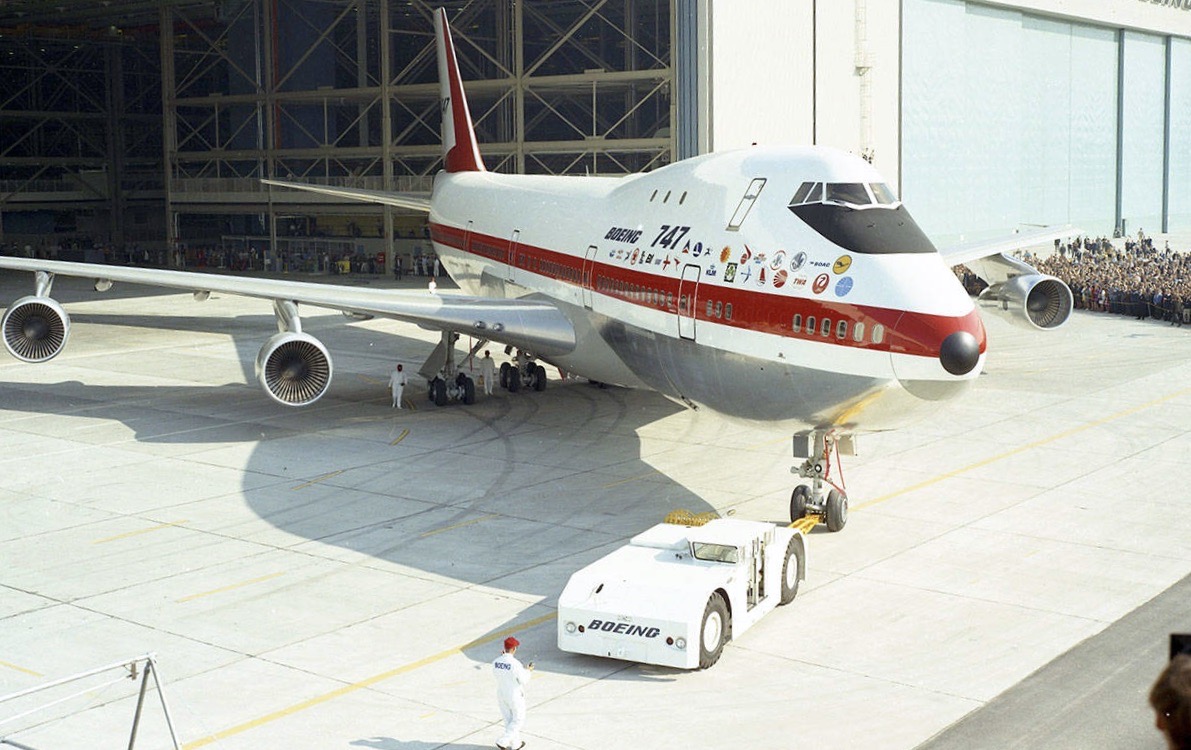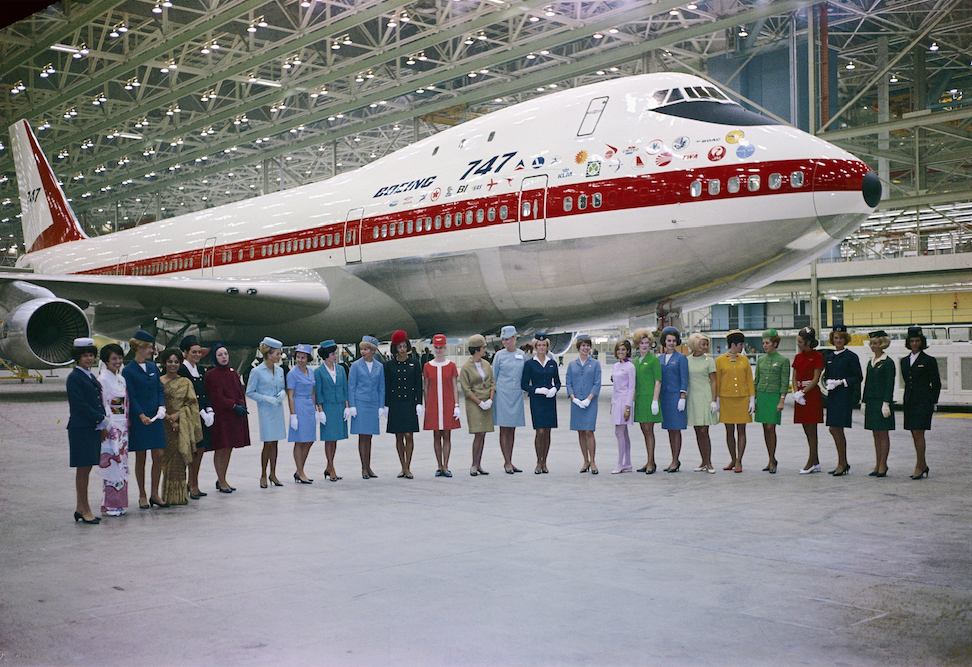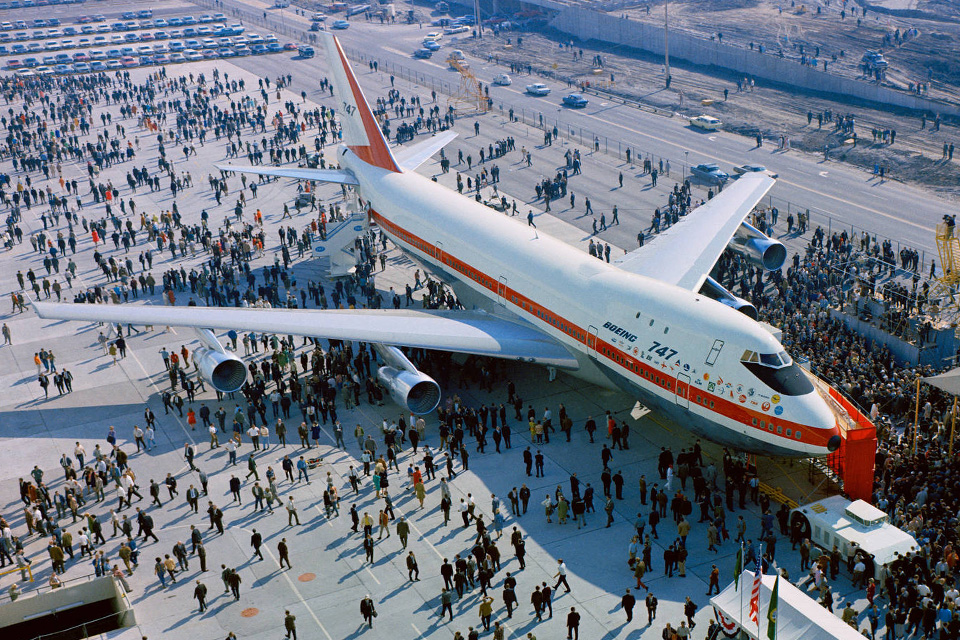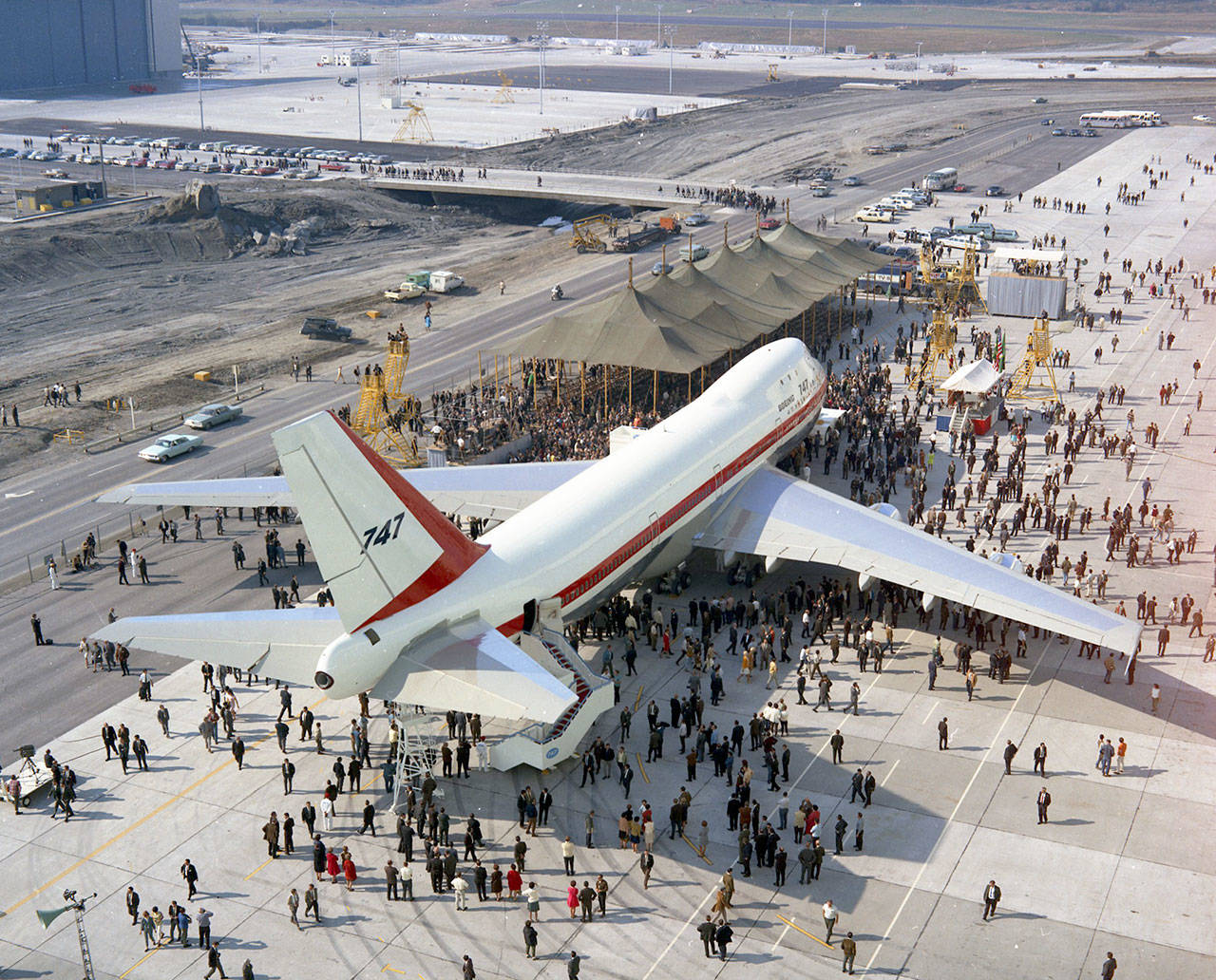

The 747-100 series was the first version of the Boeing 747 to be built. It was operated by a flight crew of three and was designed to carry 366 to 452 passengers. It is 231 feet, 10.2 inches (70.668 meters) long with a wingspan of 195 feet, 8 inches (59.639 meters) and overall height of 63 feet, 5 inches (19.329 meters). The interior cabin width is 20 feet (6.096 meters), giving it the name “wide body.” The airliner’s empty weight is 370,816 pounds (168,199 kilograms) and the Maximum Takeoff Weight (MTOW) is 735,000 pounds (333,390 kilograms).

The 747-100 is powered by four Pratt & Whitney JT9D-7A high-bypass turbofan engines. These can produce 46,150 pounds of thrust (205.29 kilonewtons) each, or 47,670 pounds of thrust (212.05 kilonewtons) with water injection (2½ minutes).
The Boeing 747-100 has a cruise speed of 0.84 Mach (555 miles per hour, 893 kilometers per hour) at 35,000 feet (10,668 meters) and it’s maximum speed is 0.89 Mach (594 miles per hour/893 kilometers per hour). The maximum range at MTOW is 6,100 miles (9,817 kilometers).

The Boeing 747 was in production for 54 years with a total of 1,574 produced. 250 of these were the 747-100 series. The final Boeing 747, a 747-8F freighter, was delivered 31 January 2023.
N7470 made its first flight on 9 February 1969. It last flew in 1995. City of Everett is on static display at The Museum of Flight, Boeing Field, Seattle, Washington.

© 2023, Bryan R. Swopes
Almighty God Bless the proudly American Boeing Company
Lovely and unforgetable upper deck!
Interesting detail: Less than a quarter century after the war german Lufthansas logo was #1 on the upper row. That was a nod from Joe Sutter – despite heavy criticism from the usual suspects – for the help from the germans throughout developement. Sutter made some friends with young german engineers in the early 60ies when an american delegation visited HFB works (later MBB, today part of Airbus) among others; one of these engineers was a former colleauges dad. They had some pretty convincing solutions to save weight especially in highly stressed parts of the fuselage.